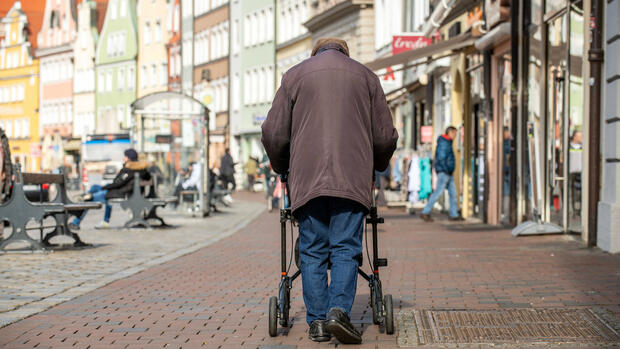Berlin The reform of disability pensions decided by the traffic light coalition will noticeably reduce the risk of poverty for those affected. However, despite additional billions, it is still almost twice as high as the population average. This is shown by a new study by the German Institute for Economic Research (DIW), which is available to the Handelsblatt in advance.
Disability pensions are given to people who can only work to a limited extent or not at all due to an accident, illness or disability. The previous governments of the traffic light had pushed through benefit improvements in 2014 and 2019, but only for new pensioners.
The reform contained in the first pension package by Minister of Labor Hubertus Heil (SPD) is now aimed at existing pensioners, some of whom have been drawing disability pensions for many years. From July 2024, your pension payments will increase by a surcharge of 7.5 percent or 4.5 percent, depending on the year you join.
In the draft law, the Ministry of Labor had calculated additional costs of 1.3 billion euros for the coming year and 2.6 billion euros in the following year. After that, the overspending slowly decreases.
According to DIW calculations, around 2.6 million disabled people will benefit from this reform. The average pension increases from EUR 968 gross to EUR 1034 per month. However, disposable income also depends on other factors, such as the earnings of family members in the household.
The reform will reduce the risk-of-poverty rate by two percentage points
The Berlin researchers calculated the effects of the reform using data from the Socio-Economic Panel (SOEP), which takes into account the entire income situation, and the pension insurance system.
According to this, 29 percent of the disability pensioners who benefit from the reform are currently considered to be at risk of poverty because they have less than 60 percent of the median income in Germany at their disposal. The reform will reduce the at-risk-of-poverty rate by two percentage points to 27 percent. However, it is well above the average for the total population, in this country a total of 16 percent of the people are at risk of poverty.
If one only considers those with reduced earning capacity who are younger than 65 years of age, the at-risk-of-poverty rate is still just under a third even after the reform.
18 percent of the disabled are considered poor because they have less than 50 percent of the median income at their disposal. The reform also reduced this rate by two percentage points to 16 percent.
Read more about the recent pension reforms
Those who are poorly qualified or have a low income have a greater risk of being unable to work than the average population, explains DIW expert Johannes Geyer.
This group often gets such low pensions that they are also dependent on basic state security. In 2021, 18 percent of men who were permanently disabled received state aid in addition to their pension; the proportion was slightly lower for women.
From the point of view of the traffic light coalition, further improvements in the disability pension are simply too expensive. “If the improvements from previous reforms for pension access had been transferred to all existing pensioners, the pensions would actually have had to be adjusted by about twice the increase now planned,” says study author Geyer.
Prevention is the best way to avoid poverty
However, it is not enough with higher amounts alone. The DIW researcher emphasizes that the best way to avoid poverty – and at the same time a remedy for the labor shortage – would be to take preventive measures to ensure that employees do not become disabled in the first place. Rehabilitation measures or fewer hurdles when looking for a new job are helpful.
Affected people often only get the status of disabled persons with a considerable amount of time and bureaucracy. Anyone who then accepts a job runs the risk of losing their status again, even if their return to the labor market is ultimately unsuccessful.
The study shows that reduced earning capacity is a significant risk of poverty in old age, said the labor market and social policy spokesman for the SPD parliamentary group, Martin Rosemann, the Handelsblatt. The reforms of disability pensions pushed by the SPD were correct. However, the results also made it clear “how important our approach is to prevent employees from becoming unable to work through healthy work, prevention and rehabilitation”.
However, the DIW notes critically that the reform comes very late – probably too late for many of those affected. Finally, it targets people who received a disability pension for the first time between 2001 and 2018.
According to statistics, that was around 3.1 million people. However, by the time the SOEP data was collected in the first half of 2020, the number of pensions had already been reduced by around 500,000 people who had either already died or only received a temporary disability pension. So they could no longer benefit from the reform.
More: “You have to be quite gullible” – Why the pension is no longer secure.
